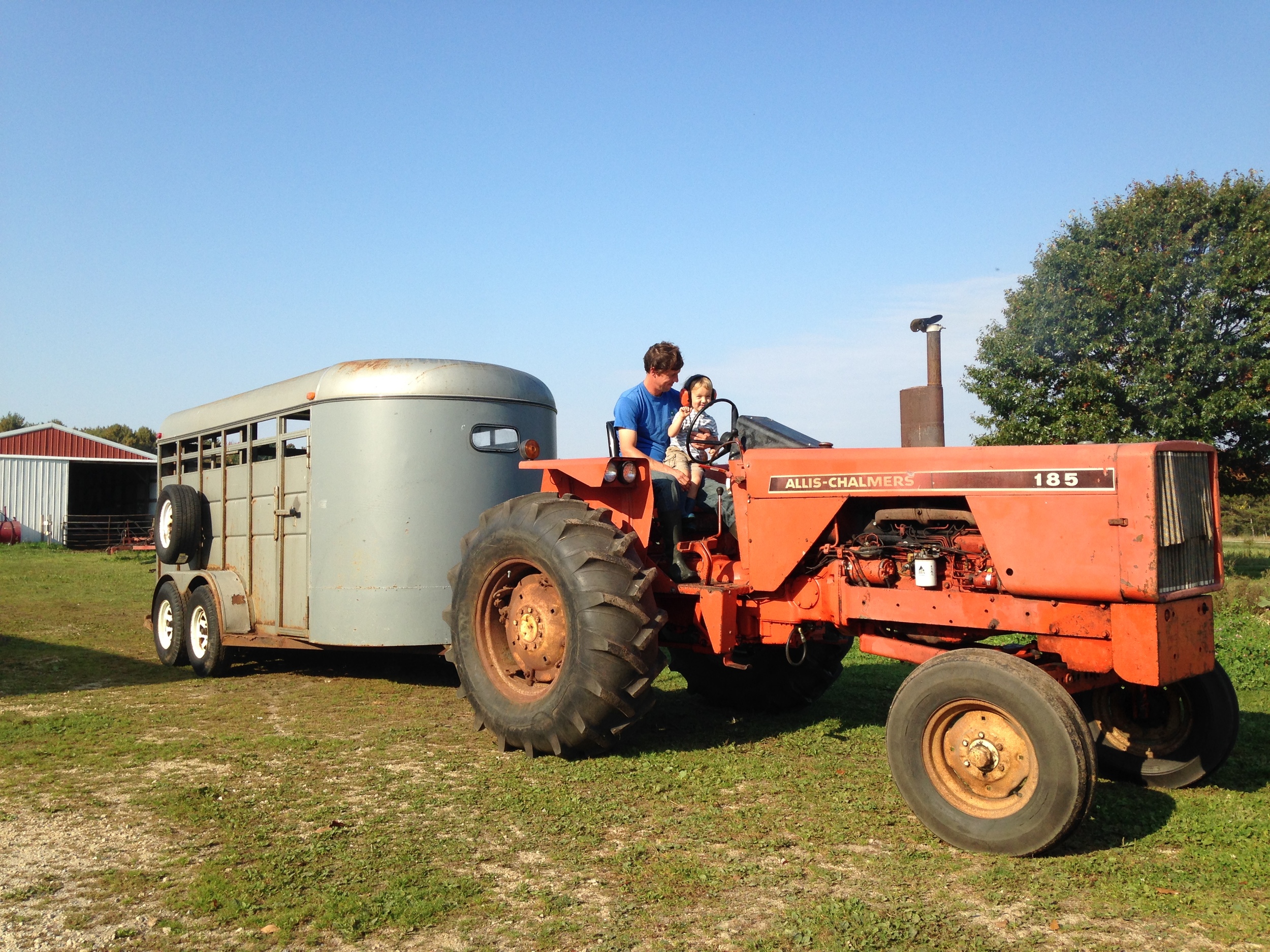And so here I am, hoping that a monster named loses its might. I sit wrangling an essay from my fingers through sheer force of will, hoping that by doing something that I’ve been putting off for a month will open the floodgates of usefulness and productivity.
Read moreFarm Week: October 6, 2014
The light is different. I’m no longer turning away from the sun. It’s lower in the sky, and I’m turning my face up to meet it. This week was further along the countdown to the end of the season. We have two boxes left, and Friday was the last outdoor market in the park in Green Lake. We are slowly peeling off layers just as we’re starting to put them back on. We did the first round of our chicken harvest, and seeing even thirty fewer chickens in the field is a good feeling. Our last pregnant sow of the year (Dot), has been big as a house for weeks. Every day I would go out and do chores and she was bigger and lower and fuller than ever. Every day, it was with disbelief that I reported that no, there was no little pile of pigs out there. Along with the creeping frost and the falling leaves, the ever-ballooning sow contributed to a strange week where time simultaneously sped by and stood still. This week more than most, we had to stop to think about what day it was. Thursday brought the annual organic certification inspection, a five hour process that also contributed to the smearing of the time-space continuum on the farm. The peppers and the tomatoes in the field are wilted and dead. The greenhouse is half empty, planted with some lettuce and awaiting the winter spinach. The sow finally farrowed on Sunday (pictures to come), large enough to feed all eight pigs for years. Time passes. Frost falls, and the sun comes to save us. One of these days, the sun will be too low and the frost will stay. Until then, we’ve got some more harvesting to do.
Thinking about: paperwork, processes, socks
Eating: homemade Indian eggplant and potatoes and cauliflower with rice; arugula with grated carrot, daikon radish, and apples tossed in a creamy lime sriracha dressing; lentil soup with homemade wheat oregano breadsticks
Reading: Lena Dunham’s Not That Kind of Girl, John Darnielle’s Wolf in White Van, MOSES’s Guidebook for Organic Certification
Farm Week: September 29, 2014
It was Homecoming week here in Green Lake, and it was a cold and blustery one. All week, we made preparations for the impending killing frost. There were some last harvests from the warm-weather summer staples like peppers, eggplant, and tomatoes. We started to rip out rows of greenhouse tomatoes in preparation for seeding some winter greens. More and more of the growing space is already in cover crops or almost ready to plow under in favor of some cover crops. The pigs are pigging out on the overripe melons and the underripe winter squash. All of our crates are filled with winter vegetables and we’re going to have to get more crates for the second time in a week before we finish the potato harvest. The slate is slowly being wiped clean, and it feels good. As excited as we were for the first tomatoes of the season, the demise of the tomatoes feels just as momentous. My mason jars are filled for winter, and now I just want to be done harvesting them, cleaning them, sorting them, selling them. Our field tomatoes especially are a very visual reminder of our failings earlier in the season, and when we no longer have to pass that mess on the way out to the field, the “better next year” mantra will ring slightly more true. We only have three more boxes to pack, one more Friday market, one more big festival, before things settle down. Well, we keep telling ourselves that things will settle down, but the list of things we’ll finally get down when things settle down is growing rapidly enough to postpone the actually settling down by quite awhile. Whatever that reality may be, the plants themselves are slowing, and the layers are coming back on. It’s a breath of fresh air.
Thinking about: cold fronts, cold fingers, cold storage
Eating: creamy nettle soup, homemade swiss chard mac and cheese, potato leek soup, taco night with refried homegrown black beans
Reading: Lena Dunham’s Not That Kind of Girl, David James Duncan's The Brothers K
Farm Week: September 8, 2014
It's a race against frost here in Central Wisconsin, and so far we seem to be winning. I've finally gotten around to real preservation, and the weekend was spent roasting and saucing and filling jars, and by Sunday night my hair was standing straight up from hovering over a steaming vat of boiling water all weekend. I ended up with quite a stockpile of food at the end of the weekend, though I didn't quite get to everything I had planned. My roasted tomatillo salsa verde comes in mild and med-hot, my roasted eggplant and hot pepper dip will be good on pita bread, my roasted Hungarian hot pepper paste will add a little heat to winter chiles and stews. So far my tomatoes come in plain seedless unseasoned, smooth roasted Amish Paste with herbs, chunky roasted tomatoes with garlic, onions, and herbs, and chunky roasted tomatoes with roasted bell peppers, garlic, and onions. I have two quarts of pesto sitting in the fridge under oil waiting for a transfer to small but heavy-duty freezer bags. During the whole weekend of kitchen takeover, I had some very confused international students asking what I was making, and more often WHY I was making it. My simple English explanation was "Well, when you grow your own vegetables on a farm, it's hard to go to the grocery store in the winter and pay money for vegetables that are not as good as the ones you grow. So I make things that will keep through the winter so I can eat well even when it's freezing outside." It's as good an explanation as any, I suppose. It's been years since I bought a tomato, in season or out, and I don't intend to start now!
Thinking about: frost blankets, darning socks, borrowed plows
Eating: Mat's amazing stuffed poblanos, lots of tastes of lots of sauces, homemade lasagne, baked mac and cheese, garlic roasted tiny potatoes
Reading: David James Duncan's The Brothers K, Jonathan Tropper’s This Is Where I Leave You, Ron Macher’s Making Your Small Farm Profitable





















